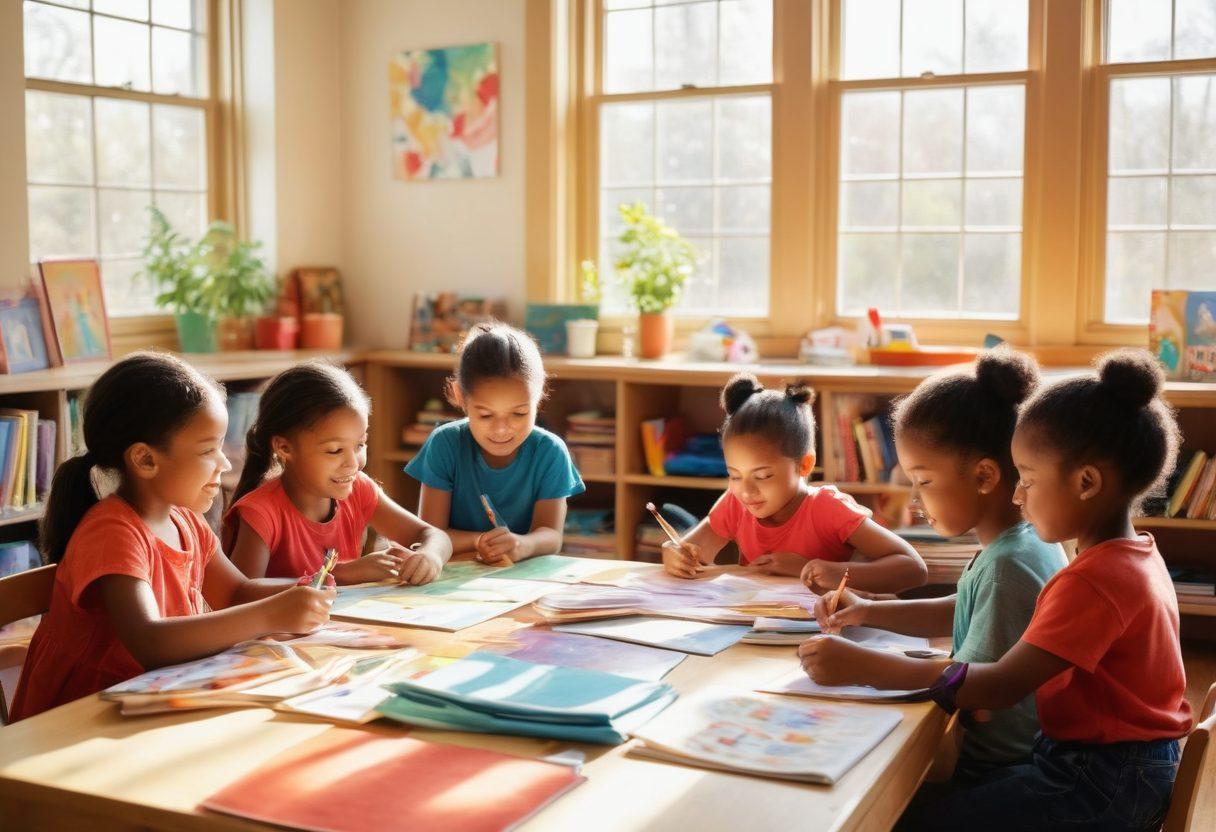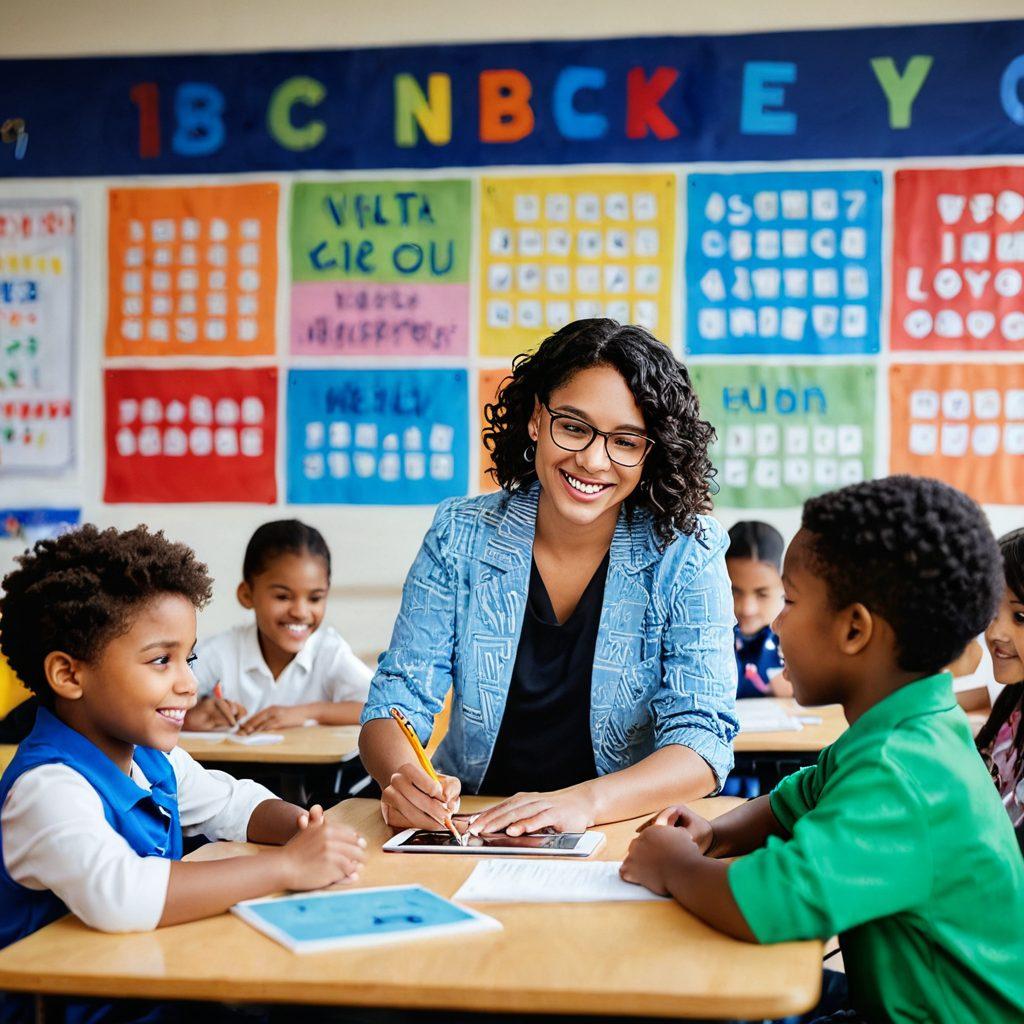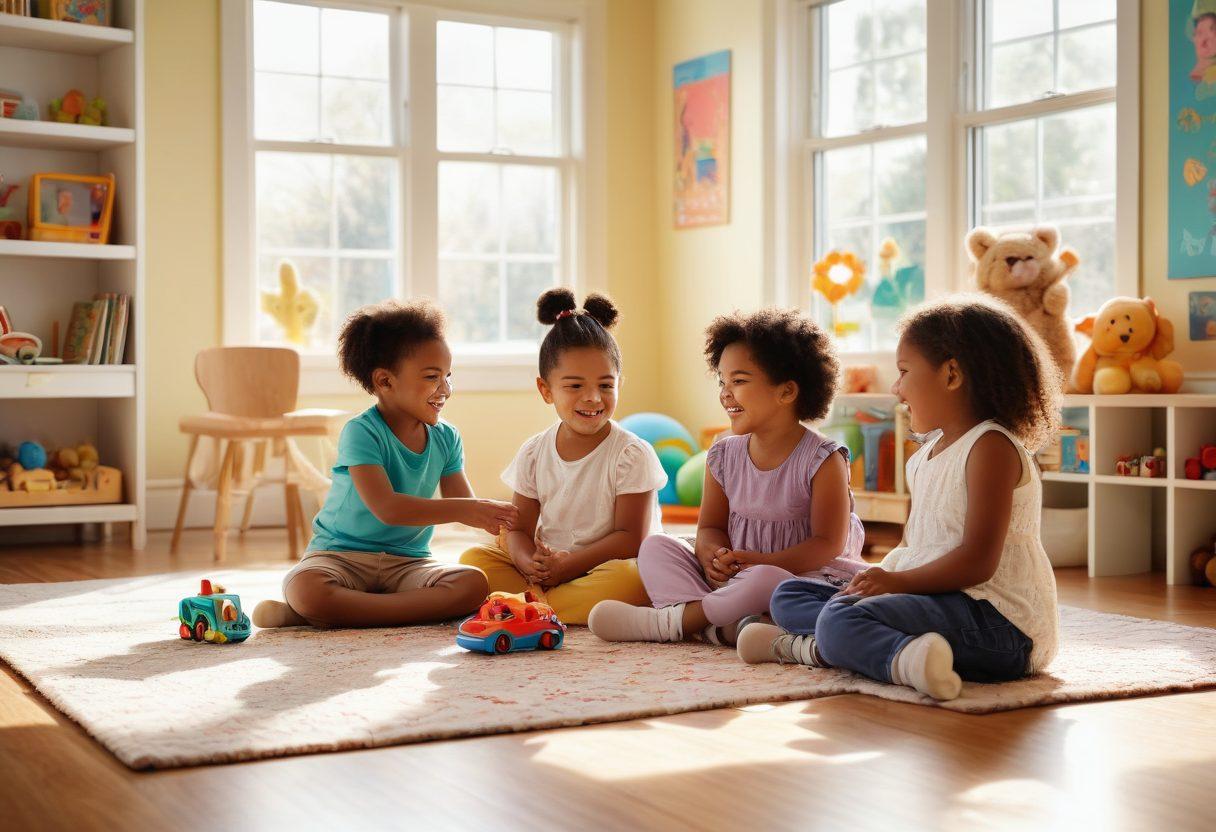Nurturing Young Minds: The Power of Affection and Interactive Learning in Early Education
When it comes to early education, the influence of affection on children’s learning cannot be overstated. Imagine walking into a preschool classroom buzzing with energy: children half-dancing, half-sitting as they read colorful storybooks, their faces lit up with curiosity. What drives that enthusiasm? It’s the warmth of affection, the gentle nudges of adoration from caring teachers or parents that create a nurturing environment. This blog delves into how such warmth fosters literacy skills and encourages engaging activities that make learning fun for toddlers.
Research has consistently shown that when children feel loved and cared for, their capacity for learning flourishes. In fact, affection in a child’s early development lays the groundwork for their reading development. As they wrap themselves in the comforting embrace of a favorite adult while exploring educational resources, they not only develop an interest in literacy but also experience the joy of learning. But how can parents and educators nurture that affectionate connection?
We often see that when a child is provided with interactive education that includes storytelling or fun learning exercises, they naturally gravitate toward reading materials. Think about storytime: instead of simply reading a tale, why not razz it up with emotion, voices, and expressions? Engaging storytelling ignites excitement and fosters a real love for stories. In this scenario, the act of reading evolves beyond just recognizing words; it becomes an adventure, an emotional journey playable in the minds of eager young learners. How can we harness that energy?
Let’s look at practical examples! Incorporating kindness into learning can also translate to setting up activity-rich, interactive environments. Value-based classrooms filled with compassion can motivate kids to learn from one another. For instance, pairing them together during early learning centers where they can share their favorite books and draw illustrations stimulates collaboration and mutual adoration for learning. This not only builds their literacy skills but also strengthens their social bonds. What types of activities can you implement today that radiate positivity?
Ultimately, fostering literacy through love stems from recognizing the vital role of affection in kids' education. By emphasizing care, kindness, and interest, we create a safe space for children to flourish. Let’s empower our little ones to embrace reading as a delightful experience rather than a chore. As educational professionals or parents, our mission is to instill a long-lasting love for literacy that they can carry with them throughout their lives. What legacy of learning will you leave for the next generation?
Interactive Education: The Key to Engaging Young Learners in Early Development
In the lively realm of children's learning, where giggles and curiosity collide, we find that interactive education holds the key to unlocking the fullest potential of early development. Have you ever noticed how a simple story can light up a child's face? It’s during these moments of shared laughter and wonder that we witness the true essence of affection and adoration in education. It’s more than just imparting knowledge; it’s about crafting experiences that foster care, interest, and kindness among young learners. With the right approach, we can engage their hearts and minds in ways that make learning as delightful as a sunny day in the park.
Imagine a classroom buzzing with enthusiasm—children gathered around, their eyes sparkling with excitement as they dive into a world of stories and imagination. Such is the magic of interactive education! It's a sanctuary where fun learning reigns supreme, and kids education transforms into an adventure filled with captivating activities. Razzle-dazzle your pupils with creative reading materials and watch as their literacy skills blossom before your eyes. When educators integrate interactive elements into preschool education, children flower in ways that traditional methods often overlook. Why settle for passive learning when we can illuminate the path to development with engaging activities?
At the heart of this vibrant approach is storytelling, a timeless art that not only entertains but also educates. Envision a circle time where a teacher unfolds tales of brave little animals venturing into the unknown. The children listen intently, their imaginations igniting as they visualize every delightful detail. This technique doesn't just promote reading development; it instills valuable life skills. Each character's journey introduces themes of empathy, cooperation, and determination, nurturing young minds to understand and apply kindness and care in their own lives. How can we use storytelling to enhance children's learning while also weaving in the values we cherish?
The power of affection also plays a pivotal role in this interactive landscape. When children sense that their educators genuinely care, their natural instinct is to reciprocate with interest and engagement. This symbiotic affection fosters an environment where learners feel safe to explore, ask questions, and even make mistakes. It’s a delicate balance—encouraging curiosity while remaining steadfast in our commitment to their development. Through this lens, we get a glimpse of how educational resources that embody kindness can create rich soil for young minds to thrive.
So, how do we harness the power of interactive education? Start by incorporating games that foster collaboration and creativity, invite storytelling circles that encourage imagination, and ensure that each child feels valued and included. In this enchanting world of early learning, where fun and education intertwine, we can watch as our little ones embark on a wondrous journey of discovery. Let’s make a promise to ourselves: to pave the way for our children not just to learn, but to love learning. In the end, isn't that the ultimate gift we can give them?
The Importance of Kindness in Preschool: Creating a Nurturing Environment for Young Minds
In the vibrant world of preschool education, every moment is a chance to nurture young minds. What truly sets the tone for effective early learning? It begins and ends with kindness. When affection and care are woven into the fabric of preschool life, children not only feel safe to explore but also thrive in an atmosphere brimming with adoration and support. This nurturing environment fosters a genuine interest in learning, opening the door to endless possibilities in children's learning and development.
Imagine a classroom filled with laughter, colorful reading materials, and engaging activities. A place where every child is welcomed with a warm smile and a kind word. This is what creating a nurturing environment looks like in early education. Such settings allow toddlers to explore their surroundings, engage in fun learning, and develop their literacy skills through interactive education. As educators, we should constantly ask ourselves: How can we create spaces that inspire kindness and care in our classrooms?
Storytelling is an exceptional tool in preschool education that highlights the power of kindness. When teachers read aloud, they don't just teach words; they also convey emotions and social values. A well-told story can ignite the imaginations of young minds, making them feel the warmth of compassion through the characters’ journeys. For instance, when children connect with characters who demonstrate kindness, they are more likely to mimic these behaviors in their own lives. How many times have you witnessed a child share a toy after hearing a tale of generosity?
Engaging activities that integrate kindness into their learning experience allow children to take the lead in their education. Interactive education encourages preschoolers to collaborate, share, and express concern for one another while performing group tasks. When children learn to razz their friends playfully or cheer them on during a project, they are not merely developing social skills, but also understanding the profound importance of kindness in their interactions. On the other hand, how can we ensure that every educational resource we provide nurtures that same sense of kindness?
The impact of kindness in preschool education cannot be overstated. As we continue to build environments filled with affection, adoration, and care, we prepare them for lives filled with empathy and understanding. With each interaction, we have the power to shape not just their educational paths, but their very characters. As educators and parents alike, we must embrace our role in children's early learning and consciously cultivate an atmosphere where kindness reigns supreme. After all, who wouldn’t want to live in a world where the values we instill today manifest in the compassionate leaders of tomorrow?


